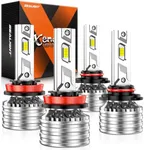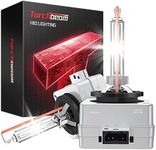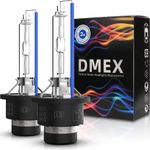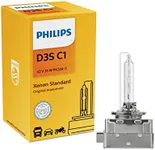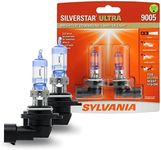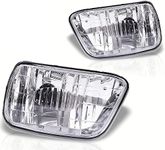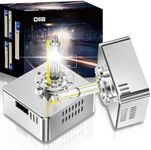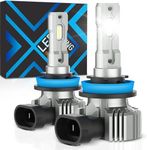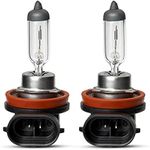Buying Guide for the Best Brightest Hid Headlights
When it comes to picking the brightest HID headlights for your vehicle, it's important to understand the key specifications that will help you make the best choice. HID (High-Intensity Discharge) headlights are known for their superior brightness and efficiency compared to traditional halogen bulbs. However, not all HID headlights are created equal, and selecting the right one involves considering several factors. Here are the key specifications you should focus on and how to navigate them to find the best fit for your needs.Brightness (Lumens)Brightness, measured in lumens, indicates how much light the headlight produces. This is crucial because brighter headlights improve visibility, especially in low-light conditions. HID headlights typically range from 3,000 to 10,000 lumens. For city driving, 3,000 to 5,000 lumens are usually sufficient. For rural or off-road driving, you might want to consider 6,000 to 10,000 lumens for maximum visibility. Choose the brightness level based on your driving environment and how much visibility you need.
Color Temperature (Kelvin)Color temperature, measured in Kelvin (K), determines the color of the light emitted by the headlights. This is important because different color temperatures can affect visibility and eye strain. HID headlights typically range from 3,000K (yellow) to 12,000K (blue). For the best visibility, a color temperature between 4,300K and 6,000K is recommended, as it closely resembles natural daylight. If you prefer a more stylish look, you might opt for higher color temperatures, but keep in mind that very high temperatures can reduce visibility.
LifespanThe lifespan of HID headlights is measured in hours and indicates how long the bulbs will last before needing replacement. This is important for cost-effectiveness and convenience. HID headlights generally last between 2,000 to 10,000 hours. If you drive frequently or for long distances, choosing headlights with a longer lifespan can save you time and money in the long run. Consider your driving habits and how often you want to replace your headlights when making your choice.
CompatibilityCompatibility refers to whether the HID headlights will fit and work with your vehicle's existing headlight system. This is crucial because not all HID headlights are compatible with all vehicles. Check your vehicle's manual or consult with a professional to ensure the HID headlights you choose are compatible with your car. This will save you from potential installation issues and ensure optimal performance.
Beam PatternThe beam pattern of HID headlights determines how the light is distributed on the road. This is important for ensuring that you have a clear view of the road without blinding other drivers. HID headlights come in various beam patterns, such as low beam, high beam, and dual beam. Choose a beam pattern based on your driving needs. For everyday driving, a low beam pattern is usually sufficient. For enhanced visibility, especially in rural areas, a high beam or dual beam pattern might be more appropriate.
InstallationInstallation refers to how easy or difficult it is to install the HID headlights. This is important for convenience and ensuring that the headlights are set up correctly. Some HID headlights come with plug-and-play kits that make installation straightforward, while others may require professional installation. If you're comfortable with DIY projects, a plug-and-play kit might be suitable. If not, consider seeking professional help to ensure proper installation and optimal performance.
